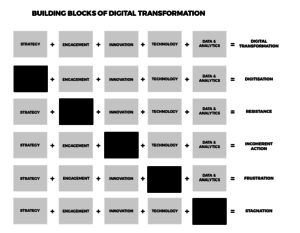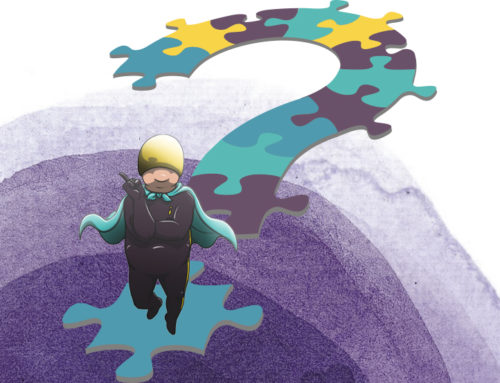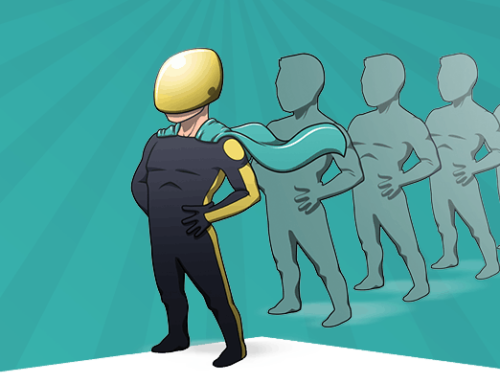Creating Digital Transformation involves these 5 organisational building blocks:
- Digital business strategy & culture
- Staff and customer engagement
- Processes and innovation
- Technology
- Data and Analytics.
Neglecting any one of these has certain consequences. If we detect any of these symptoms in our organisations we can diagnose which areas of the business need attention.

Arguably Digital Transformation looks rather like pulling off the perfect heist – something as slick and smart as Ocean’s Eleven taking down the Bellagio, the Mirage and the MGM Grand and walking away with the money and the girl.
Come to think of it, Digital Transformation and Ocean’s Eleven have quite a lot in common…
1: They both start with a strategy.
Danny Ocean’s strategy has a specified goal (rob 3 Las Vegas casinos), to overcome a diagnosed challenge (how to exact revenge on ex-wife pilfering Terry Benedict) based on guiding policy (don’t hurt anybody, don’t steal from anyone who doesn’t deserve it, and play the game like you have nothing to lose) and a coherent plan of action of exactly how to achieve it (far too complex to reproduce here but there was a lot of shenanigans to circumvent those security systems and to win Tess back).
2: That strategy was embedded in the right culture.
Without Rusty and the rest of the crew, Danny is just a man with a half-baked plan and a grudge. It’s only when Danny and Rusty join forces and assemble their team does the strategy fully take shape. When they describe the challenges they face to their crew, they in turn contribute their experience and expertise to overcome those challenges in very creative and innovative ways. Acrobats, pick pockets, computer wizards, explosives experts and masters of disguise all coming together to solve problems. It’s quite beautiful.
It might have been tempting to assemble a team of their favourite people but that probably wouldn’t have worked out so well. Danny and Rusty select their crew members because they have particular talents that match the task in hand. These master craftsmen are the tools we choose to employ in our organisations. Selecting the tools for the job should be based on an empirical diagnosis of the challenge. Ie the strategy.
3: Their people are engaged.
This is why they get such commitment and creativity from their crew. This team of ‘proper villains’ have the talents and expertise to do the job and they are given the autonomy to get on with it. If some training is required (Matt Damon), it’s provided. They are united by a common purpose and they get to use their talents to achieve it. If they fail, it will be because the plan failed. No one will be made to blame.
4: They innovate.
No one has pulled off a Las Vegas casino robbery like this before. They totally reimagine how to accomplish their task by drilling down into the details of every obstacle in their way and cross-pollinate ideas from very different sources to find a way around those obstacles. It’s collaborative, it’s inventive, it’s creative and it’s just plain gorgeous.
5: They use technology to deliver
Among their technological arsonry they make very imaginative use of a fake safe, pyrotechnics, bugs, computers, surveillance equipment, phones, vans, and of course the ‘pinch’ that creates the blackout. They test everything, make sure it all works, and then exploit the tech to help them perform tasks efficiently, effectively and conveniently.
6: They use data and analytics effectively
Not much is left to chance in the heist. They time everything to perfection, do their research meticulously, record, measure and monitor every detail. They feed real-time data back to the actors on the floor who use it to guide decision making in the moment and to predict the movements of the key players in this carefully choreographed dance of execution. It’s data-driven decision making in full technicolour glory.
7: It’s fun and energising and inspiring. Who wouldn’t want be in their gang?
And so it is with Digital Transformation (without the morally questionable behaviour). It might start with a seemingly insurmountable problem, but the rewards for meeting the challenge are potentially huge both personally and financially. Getting the wheels of transformation to start turning takes effort, but momentum soon starts to gather and before long you’ll be firing on all cylinders. What’s more the process is energising; digitally transformed organisations are more fun to work in and for customers to do business with.
The process of Digital Transformation is only achieved when all 5 change blocks are in order and it always starts with strategy. Strategy is created using a purpose built digital transformation framework.


